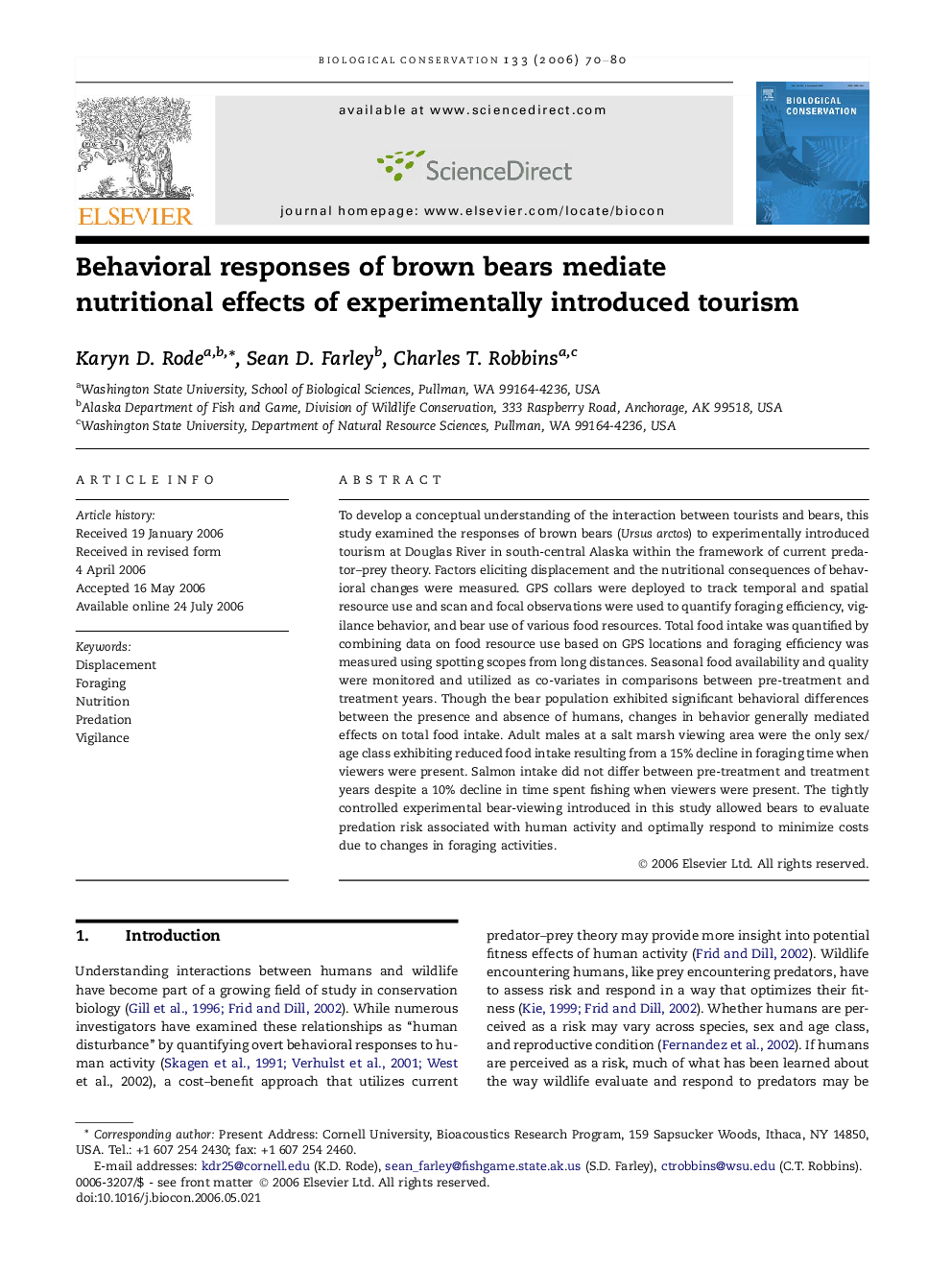| Article ID | Journal | Published Year | Pages | File Type |
|---|---|---|---|---|
| 4387376 | Biological Conservation | 2006 | 11 Pages |
To develop a conceptual understanding of the interaction between tourists and bears, this study examined the responses of brown bears (Ursus arctos) to experimentally introduced tourism at Douglas River in south-central Alaska within the framework of current predator–prey theory. Factors eliciting displacement and the nutritional consequences of behavioral changes were measured. GPS collars were deployed to track temporal and spatial resource use and scan and focal observations were used to quantify foraging efficiency, vigilance behavior, and bear use of various food resources. Total food intake was quantified by combining data on food resource use based on GPS locations and foraging efficiency was measured using spotting scopes from long distances. Seasonal food availability and quality were monitored and utilized as co-variates in comparisons between pre-treatment and treatment years. Though the bear population exhibited significant behavioral differences between the presence and absence of humans, changes in behavior generally mediated effects on total food intake. Adult males at a salt marsh viewing area were the only sex/age class exhibiting reduced food intake resulting from a 15% decline in foraging time when viewers were present. Salmon intake did not differ between pre-treatment and treatment years despite a 10% decline in time spent fishing when viewers were present. The tightly controlled experimental bear-viewing introduced in this study allowed bears to evaluate predation risk associated with human activity and optimally respond to minimize costs due to changes in foraging activities.
